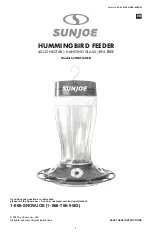
BASIC INFORMATION REGARDING MIG WELDING
GB
(GB) 3
GB
1 - Welding system selector:
In position
press the torch button to start welding, and release to stop.
In position
press the torch button to deliver gas; on release, wire feed
and current are activated; press again to stop wire feed and current and release to
shut off the gas supply.
In position
the welder operates in timed mode; press the torch button
to start the welding phase, which stops automatically after the time interval as set
on the timer potentiometer.
2 - Machine ON indicator lamp
3 - Machine overheating indicator lamp
4 - Wire feed speed control -potentiometer
5 - Spot welding time control potentiometer
,
from 0.3 to 10 seconds (operating
only with selector (
Ref. 1
- Fig. 1 page 2) set to position
6 - Wire feed motor acceleration time control potentiometer.
7 - Control potentiometer to regulate time during which welding power is main-
tained after the relative shutdown signal
. In practice, at the end of welding, if
this time is too short, the wire remains stuck in the bath or protrudes too far from
the torch contact tube; otherwise, if the control time is too long, the wire remains
stuck in the torch contact tube, often causing damage to the latter.
8 - Advance wire button (without "current")
9 - Gas output test button
10 - Euro torch connector
5.0 BASIC INFORMATION REGARDING MIG WELDING
MIG WELDING PRINCIPLES
MIG welding is autogenous, i.e. it permits welding of pieces made of the same
metal (mild steel, stainless steel, aluminium) by fusion, while granting both phys-
ical and mechanical continuity. The heat required for melting is generated by an
electric arc that strikes between the wire (electrode) and the piece to be welded. A
shield gas protects both the arc and the molten metal from the atmosphere.
6.0 CONNECTION AND PREPARATION OF EQUIPMENT FOR WELD-
ING
Connect welding accessories carefully to avoid power loss or leakage of dan-
gerous gases.
Carefully follow the safety standards
N.B.
DO NOT ADJUST SWITCHES
during welding operations to avoid dam-
age to the equipment.
Check that gas is delivered from the nozzle and adjust flow by means of the
pressure reducer valve.
CAUTION:
Screen gas flow when operating in outdoor or ventilated sites; welding
operations may not be protected due to dispersion of inert shielding gases.
6.1
WELDING
1.
Open the gas cylinder and regulate gas outlet flow as required. Fit the earth
clamp on a part of the welding piece without any paint, plastic or rust.
2.
Select the welding current by means of switches (
Ref. 11
- Fig. 1 page 2);
bear in mind that the greater the welding thickness, the more power is
required. The first switch setting is suitable for minimum thickness weld-
ing.Also take into account that each setting features a specific wire drive
speed which can be selected by means of adjustment knob (
Ref. 4
- Fig. 1
page 2).
6.2
CARBON STEEL WELDING
For MIG welding, proceed as follows:
1.
Use a binary shielding gas (commonly a AR/CO2 mixture with percentages
ranging from 75-80% of Argon and from 20-25% of CO2), or ternary mix-
tures such as AR/CO2/O2. These gases provide welding heat and a uniform
and compact bead, although penetration is low. Use of carbon dioxide
(MAG) as a shielding gas achieves a thin and well-penetrated bead but ioni-
sation of the gas may impair arc stability.
2.
Use a wire feed of the same quality of that of the steel for welding. Always
use good quality wire; welding with rusty wires can cause welding defects.
In general the applicable current range for wire use is:
- Ø wire mm x 100 = minimum Amps.
- Ø wire mm x 200 = minimum Amps.
Example: Ø filo 1.2 mm= minimum Amps 120 mm/maximum Amps 240.
The above range is used with binary AR/CO2 gas mixtures and with short-
circuiting transfer (SHORT).
3.
Do not weld parts where rust, oil or grease is present.
4.
Use a torch suited to welding current specifications
5.
Periodically check that the earth clamp pads are not damaged and that the
welding cables (torch and earth) are not cut or burnt which could impair
efficiency.
6.3
STAINLESS STEEL WELDING
MIG Welding of 300 series (austenitic) stainless steel must be carried out with a
shielding gas that has a high Argon content and a small percentage of O2 to stabi-
lise the arc. The most commonly used mixture is AR/O2 98/2.
- Never use CO2 or AR/CO2 mixtures.
- Never touch the wire.
The filler material used must be of a higher quality than the base material and the
welding zone must be completely clean.
6.4
ALUMINIUM WELDING
To MIG weld aluminium, use the following:
1.
100% Argon shielding gas.
2.
Filler wire with a composition suited to the base welding material. To weld
ALUMAN and ANTICORODAL use 3-5% silicon wire.To weld PERALUMAN
and ERGAL use 5% magnesium wire.
3.
Use a torch designed for aluminium welding.
6.5
SPOT WELDING
This type of welding is used for spot welding two
overlapping sheets, and requires the use of a special gas nozzle.
Fit the spot welding gas nozzle, press it against the piece to be welded. Press the
torch button; note that the welder will eventually detach from the piece. This time
period is fixed by the TIMER control (
Ref. 5
- Fig. 1 page 2), and must be set
depending on the thickness of the material.
7.0 MIG WELDING FAULTS
7.1
FAULT CLASSIFICATION AND DESCRIPTION
MIG welds may be affected by various defects, which are important to identify.
These faults do not differ in form or nature from those encountered during manual
For optimal welding, keep the torch in
the same direction as the wire feed, as
illustrated in figure.






















